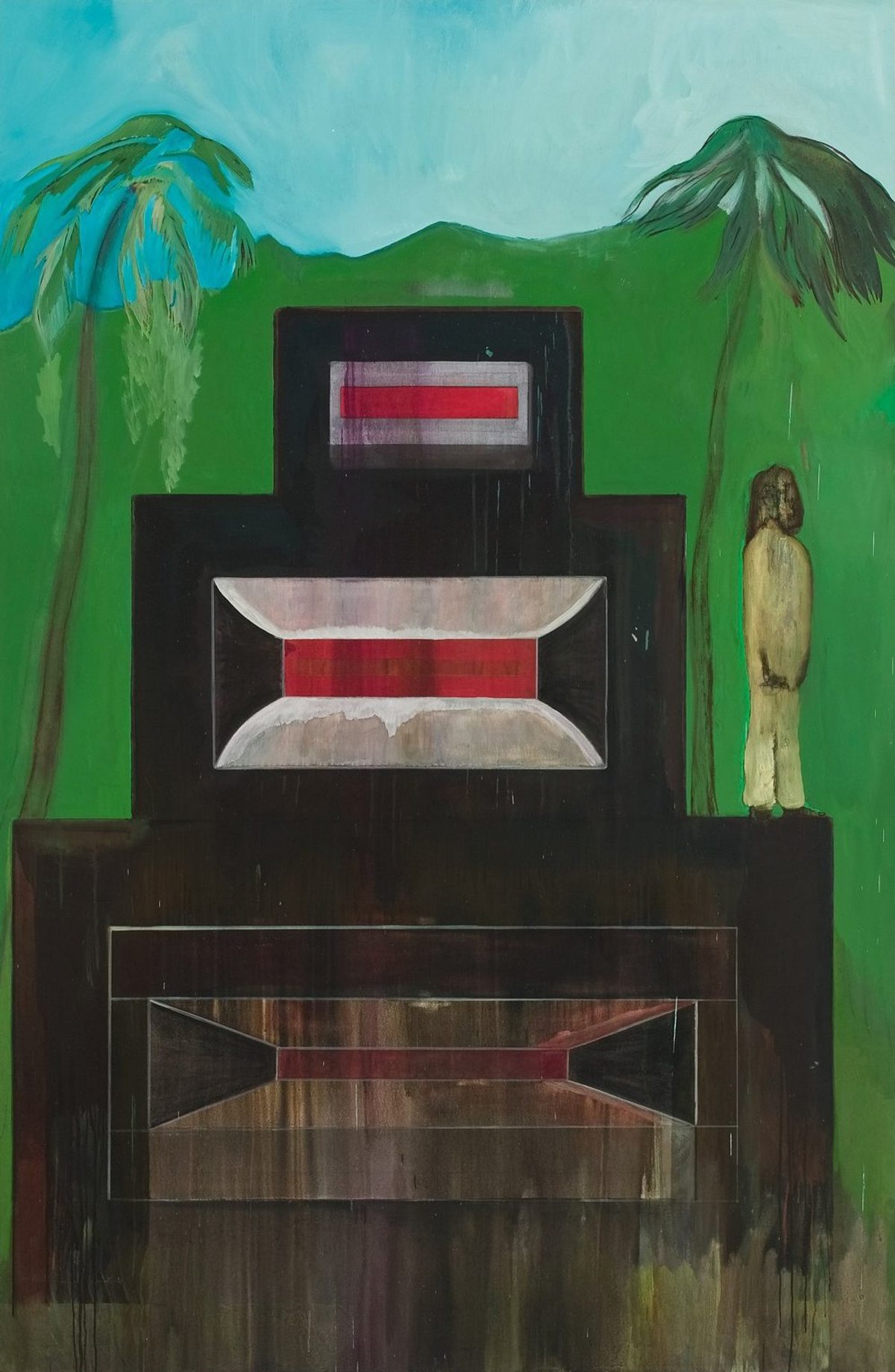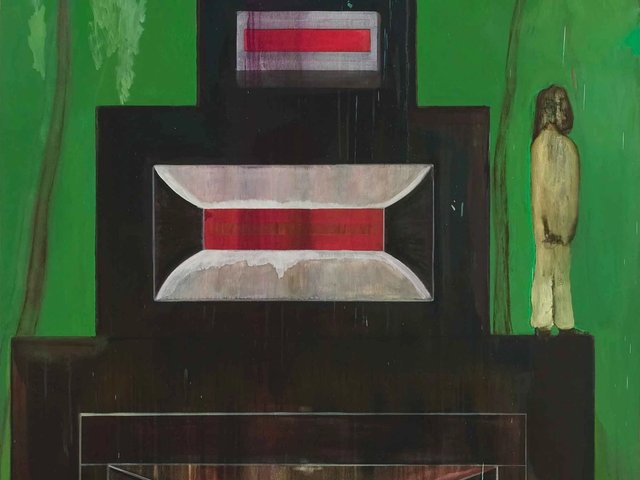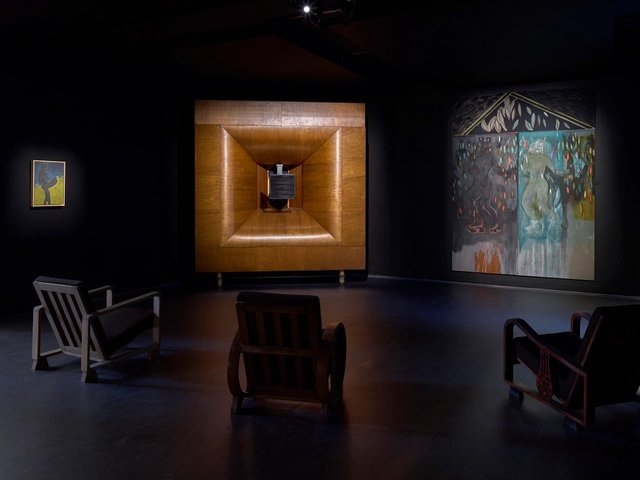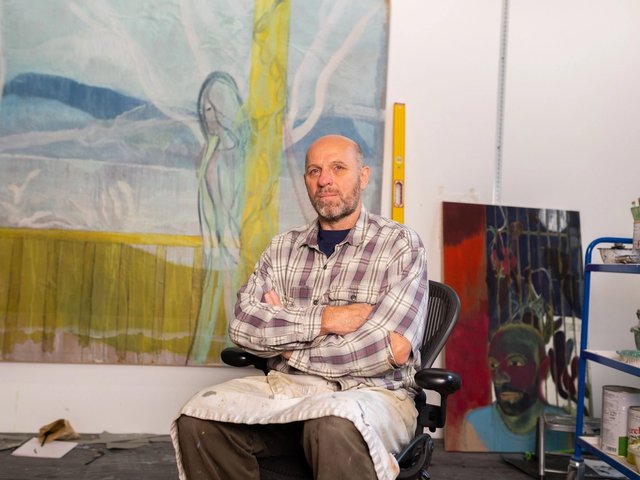Peter Doig’s Maracas (2002-08) may look at first like a Caribbean landscape invaded by Modernist abstraction. Beneath a blue sky, with green hills behind and surrounded by palm trees, rises a stack of progressively smaller rectangles dominated by those quintessential Constructivist colours—black, white and red.
But then there is a figure, in Naples yellow, who appears to stand on the bottom rectangle. What might initially have seemed to be a painterly exercise in the collision of nature and abstraction is in fact a memory: a moment Doig encountered early in his years in Trinidad, where he went for a residency in 2000 and then set up home for close to two decades. In one of his travels around the island, he visited Maracas Bay, a bathing spot close to the Trinidad capital, Port of Spain. At one end of the beach he saw a sound system—a stack of speakers—on which stood a man in a yellow suit. He first translated this recollection into a drawing for a poster for StudioFilmClub, the cinema night that he ran with fellow artist Che Lovelace in Trinidad, and eventually it became the subject of this nearly three-metre-tall painting.
Maracas is one of numerous canvases made since the turn of the millennium that feature in House of Music, Doig’s exhibition at Serpentine South. But what sets this apart from Doig’s previous museum shows in the UK—at Tate Britain in 2008, National Galleries of Scotland in 2013, and the Courtauld Gallery in 2023—is that sound systems are as central to the presentation as paintings.
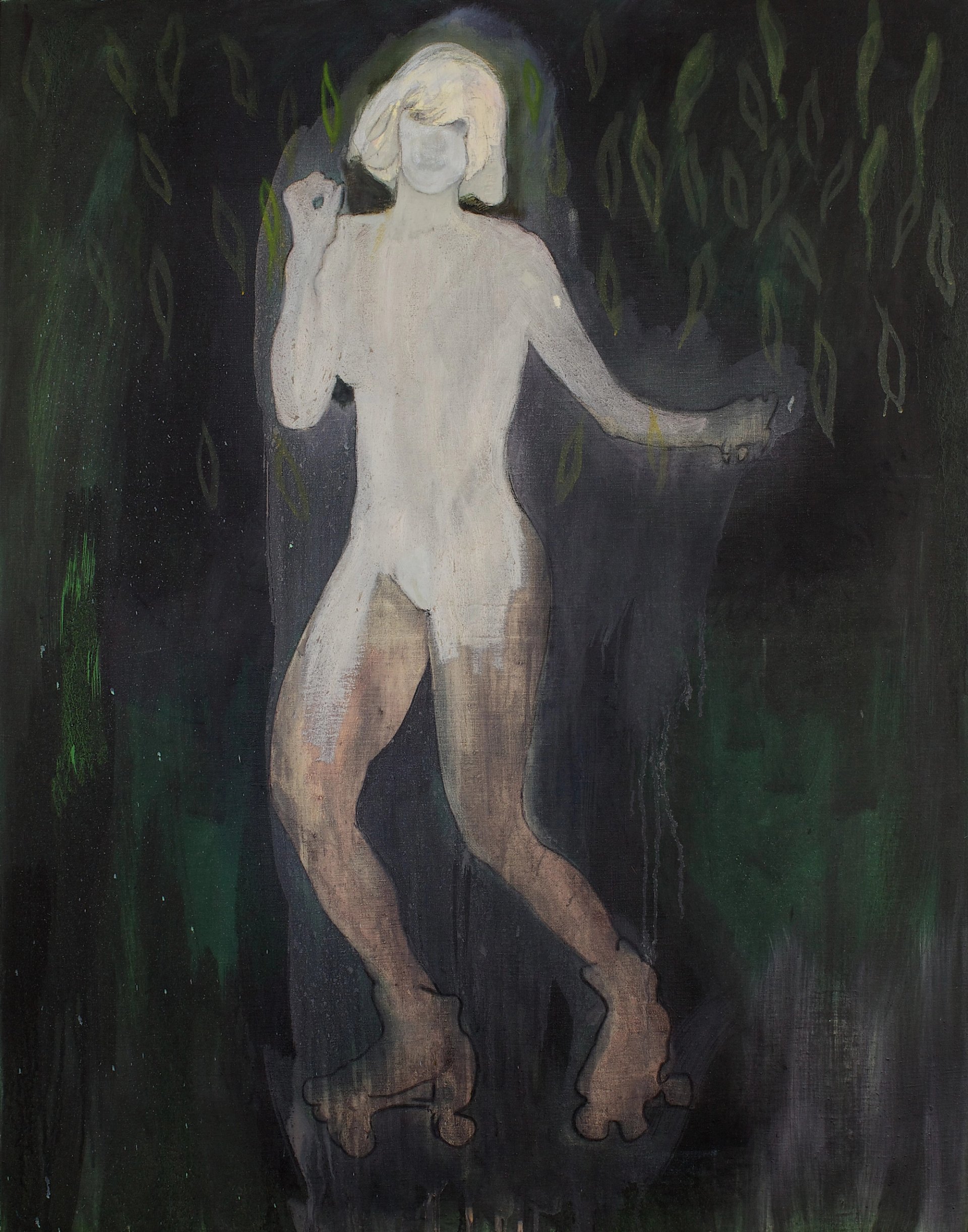
Fall in New York (Central Park) (2002-12) depicts a roller-skating dancer © the artist
“We have a series [of exhibitions] where we invite artists who have had a lot of exhibitions to explore an unexpected, new take,” says Hans Ulrich Obrist, the artistic director of Serpentine Galleries. With the Serpentine team, Obrist—who has long been fascinated with divining and then helping carry out artists’ unrealised projects—had in mind Doig’s multidisciplinary interests, as demonstrated with StudioFilmClub. But eventually Doig focused on another, if related, cultural form: music. Obrist has a history of bringing together art and sound, including pairing the painter Gerhard Richter and the composer Arvo Pärt, and suggests that exhibitions that bring together music and visual art create “a very different emotion”.
So in the Serpentine South, alongside Doig’s paintings, is an original Western Electric/Bell Labs sound system, made in the late 1920s and early 1930s, and salvaged from UK cinemas by Laurence Passera. Based in London, Passera is an expert in these audio systems, and has worked with Doig for many years, including on a related sound system that the artist had in his Trinidad studio. Many similar speaker systems were “thrown away when newer technologies were invented”, Obrist says, “but they’re actually of a sublime sound quality, not surpassed ever after. They’re an experience which is really unique, and they’re also beautiful sculptures—amazing objects, these huge boxes.”
Doig’s idea, Obrist explains, is to “create a situation where visitors could listen to records and at the same time also look at Peter’s paintings, some older paintings where music plays a role and he’s creating a whole new body of work”. Among the older pieces, as well as Maracas, is Music of the Future (2002-07), an atmospheric nocturnal landscape that again evokes memories, in this instance, Doig’s experiences of the Savannah, a park in Port of Spain where, at night, people would practice Carnival performances on steel drums.
Sunday music sessions
The sound system is activated on Sundays throughout the exhibition’s run, in a series of live events called Sound Service. Doig himself played records at the beginning of the show’s run, along with Ed Ruscha, and a host of notable figures are following them, including the artist Arthur Jafa (on 19 October). Others due to play (on dates still to be confirmed as we went to press) are the dub poet Linton Kwesi Johnson and the musicians Brian Eno and Cat Power. Taken together, the paintings and live listening sessions are an exemplar, he says, of “how a solo show can also be a group show”.
The musical element also has the potential to create a more intimate connection between Doig and his audience. Art presented in pristine white-cube galleries takes on a different character from the studio, inevitably. Might one of Doig’s aims in stepping outside the obvious presentation of a painter’s work be to evoke his authentic studio experience, as opposed to one mediated by its institutional framing? “One hundred percent,” Obrist says. “Because when we made a studio visit with the team… basically in Peter’s studio there is this sound system. So the visitor will experience, in a way, what he experiences every day.”
• Peter Doig: House of Music, Serpentine South, until 8 February 2026
• Peter Doig will be on The Art Newspaper’s podcast A brush with…, out next week


